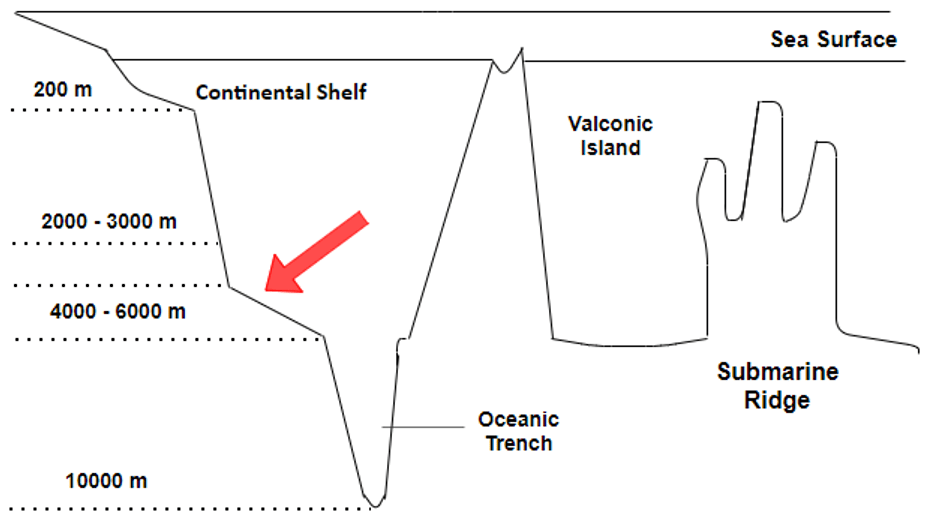This set of Marine Biotechnology Multiple Choice Questions & Answers (MCQs) focuses on “Ocean Habitat”.
1. Which intergovernmental panel was established in 1988 to assess climate change related data published in scientific journals?
a) IPCC
b) IPPC
c) ICCP
d) IICP
View Answer
Explanation: Intergovernmental Panel on Climate Change (IPCC) was established in 1988 by United Nations Environment Programme and World Meteorological Organization. It publishes an assessment report at regular intervals by assessing science of climate change, effects of climate change and our options for mitigating it.
2. Which hypothesis was confirmed by the Glomar Challenger, a ship launched in 1968?
a) Theory of subsidence
b) Darwin’s theory of evolution
c) Seafloor spreading
d) Neutral theory
View Answer
Explanation: The Glomar Challenger recovered vertical sediment core samples from various sites on opposite sides of the mid-Atlantic Ridge and confirmed the hypothesis of seafloor spreading and continental drift.
3. The continental shelf is a part of the pelagic zone.
a) True
b) False
View Answer
Explanation: The continental shelf is a structural part of the continental landmass. It extends seaward from the shoreline. It is expected that if the sea level were lowered by 5%, the continental shelf would not be considered an oceanic feature.
4. Flat sediment-covered areas of deep-ocean basins are called ____________________
a) continental shelf
b) continental slop
c) bathyal plains
d) abyssal plains
View Answer
Explanation: Abyssal plains are sediment-covered areas that completely bury small crustal elevations called abyssal hills. These plains are situated near ocean basin margins at depths of 3000 – 4000 metres.
5. The range of underwater mountain chain systems is called _________________
a) ridge and rise system
b) hydrothermal vents
c) trench
d) seamounts
View Answer
Explanation: Ocean ridge and rise systems are the underwater chain of mountains. They form continuous linear features that encircle the earth. The ridges arise due to divergent plate tectonics.
6. Which ocean-floor feature extend deeper than 6000 meters?
a) Trenches
b) Sublittoral zone
c) Euphotic zone
d) Twilight zone
View Answer
Explanation: Trenches are distinctive ocean-floor features usually extending deeper than 6000 meters. Most of the trenches are located on the margins of Pacific Ocean and are the deepest parts of the Ocean.
7. Identify the marked region in the figure.

a) Continental shelf
b) Continental slope
c) Continental rise
d) Abyssal plain
View Answer
Explanation: Abyssal plains are flat seafloor area adjacent to a continent, at a depth of upto 6000 meters. The plains are largest and most common in the Atlantic Ocean for instance the Sohm Plain in North Atlantic.
8. Which organism depends entirely on chemosynthetic bacteria for food?
a) Giant tube worm
b) Vampire squid
c) Nautilus
d) Sea cucumber
View Answer
Explanation: The Giant tube worm is a deep sea organism, an inhabitant of the trenches. The trenches are found in the hadopelagic zone where there is no light penetrating from the surface. The tube worm depends entirely on chemosynthetic bacteria that use methane and carbon dioxide to synthesize organic materials.
9. Which of the following is a mechanism used by dolphins?
a) Sporulation
b) Desiccation
c) Gill expansion
d) Biosonar
View Answer
Explanation: Dolphins use biosonar systems capable of high-resolution target discrimination. These organisms produce sharp sounds and detect the echo as it bounces off a target. Since the seawater is highly opaque, opacity of seawater to light is compensated by its transparency to sound.
10. Which property of seawater affects the sinking tendency of marine organisms?
a) pH
b) Viscosity
c) Opacity
d) Turbidity
View Answer
Explanation: The stickiness between the water molecules is called the viscosity. Viscosity of seawater is responsible for reducing the sinking tendency of marine organisms by increasing the frictional resistance and introducing frictional drag.
More MCQs on Ocean Habitat:
Sanfoundry Global Education & Learning Series – Marine Biotechnology.
To practice all areas of Marine Biotechnology, here is complete set of 1000+ Multiple Choice Questions and Answers.
If you find a mistake in question / option / answer, kindly take a screenshot and email to [email protected]
